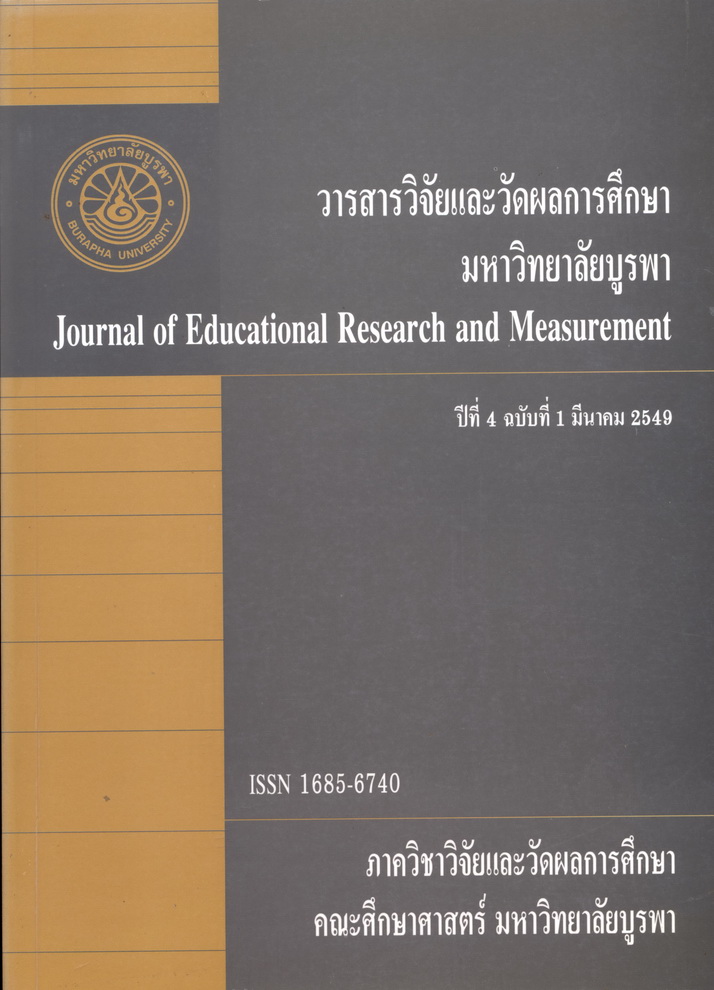การพัฒนาเทคนิควิธีการวิเคราะห์เส้นทางสําหรับโมเดลตัวแปรแฝงโดยประยุกต์ทฤษฎีการตอบสนองข้อสอบ (IRT)
Main Article Content
Abstract
การวิจัยนี้มีวัตถุประสงคเพื่อพัฒนาเทคนิควิธีวิเคราะหเสนทางสําหรับโมเดลตัวแปรแฝงโดย ประยุกตทฤษฎีการตอบสนองขอสอบ (วิธี PAIRT) และเปรียบเทียบผลการวิเคราะหกับการวิเคราะห เสนทางแบบ PAL (Path Analysis with LISREL) โดยใชขอมูลจําลองจากคอมพิวเตอรและขอมูลเชิง ประจักษ การดําเนินการวิจัยแบงเปน 3 ขั้นตอน ไดแกขั้นพัฒนาเทคนิค PAIRT, ขั้นการใชขอมูลจําลอง เพื่อเปรียบเทียบผลการวิเคราะหระหวางวิธี PAIRT กับวิธี PAL และขั้นทดลองใชกับขอมูลเชิงประจักษ ผลการเปรียบเทียบปรากฏวา คาความคลาดเคลื่อนมาตรฐานของการประมาณคา Pji ของวิธี PAIRT มีจํานวนครั้งคํานวณทวนซ้ํานอยกวาวิธี PAL คาเฉลี่ยของ p – value ของคาไค-สแควรของวิธี PAIRT สูงกวาวิธี PAL คา Pji ของวิธีทั้งสองไมมีความสัมพันธเชิงเสนตรง และผลการทดลองใชกับ ขอมูลเชิงประจักษชี้ใหเห็นวาวิธี PAIRT ดีกวาวิธี PAL
THE DEVELOPMENT OF PATH ANALYSIS TECHNIQUES FOR LATENT VARIABLE MODELS USING MODIFIED ITEM RESPONSE THEORY
The purpose of this research was to develop a path analysis technique for latent variable models, based on modified item response theory (the “PAIRT” approach), and to compare results with the “PAL” approach (Path Analysis with LISREL), using both simulation data and empirical data. There were three steps to the study: development of the PAIRT technique; the use of simulation data to compare PAIRT and PAL; and a try-out with empirical data. In comparing results, it was found that the standard error of estimation of the path coefficient of correlation, Pji, using the PAIRT technique, involved fewer iterations than required by the PAL approach. The mean p-value of the chi-square goodness of fit index found by using the PAIRT approach was larger than that found via PAL. The Pji estimates resulting from the two approaches were found to have a non-linear relationship. A try-out with empirical data indicated that the PAIRT model provided better fit.

